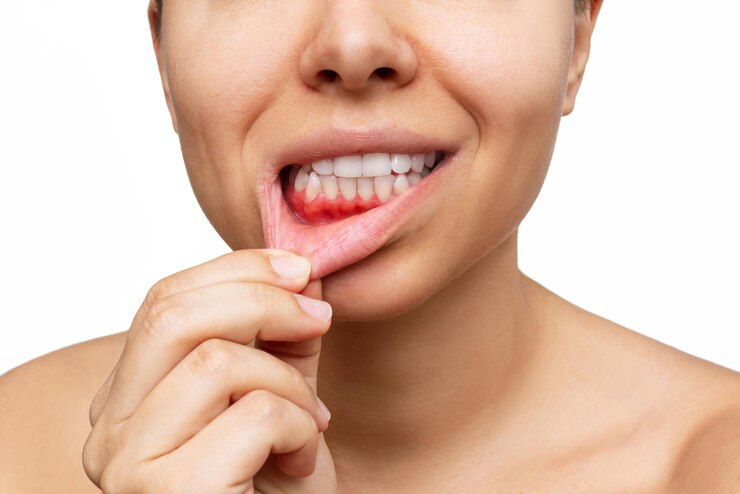Bleeding gums can be a distressing experience, often signalling underlying oral health issues that need immediate attention. While it might seem like a minor inconvenience to some, the reality is that bleeding gums can indicate a range of conditions, from simple irritation to more serious systemic diseases. Understanding the causes and potential bleeding gums treatment options can empower individuals to take proactive steps towards better oral health.
Understanding the Causes of Bleeding Gums
Bleeding gums is primarily associated with gingivitis, a common form of gum disease caused by the accumulation of plaque—a sticky film of bacteria that forms on the teeth. When plaque is not effectively removed through regular brushing and flossing, it can harden into tartar, leading to inflammation of the gums. This inflammation manifests as redness, swelling, and, ultimately, bleeding. It's crucial to recognise that gingivitis is often reversible with diligent oral hygiene practices. However, if left untreated, it can progress to periodontitis, a more severe condition that can result in tooth loss.
Another significant factor contributing to bleeding gums is hormonal changes. Women, in particular, may experience fluctuations in hormone levels during menstruation, pregnancy, or menopause, which can make gums more sensitive and prone to bleeding. Increased blood flow to the gums during these times can exacerbate any existing gum inflammation, making it essential for women to maintain rigorous oral hygiene during these periods.
Certain medical conditions can also play a role in gum health. Diabetes is one such condition that significantly impacts the body’s ability to fight infections, including gum disease. Individuals with diabetes may find their gums more susceptible to infections, leading to increased bleeding. Additionally, other systemic diseases such as blood disorders and autoimmune diseases can affect gum health. Medications, particularly anticoagulants and certain types of blood pressure medications, can also increase the likelihood of bleeding gums as a side effect.
Identifying Symptoms and When to Seek Help
While occasional gum bleeding may not always indicate a serious issue, persistent bleeding should never be ignored. Accompanying symptoms such as bad breath, swollen gums, and receding gum lines warrant a visit to a dental professional. Early intervention can prevent the progression of gum disease and the potential for more severe health implications. Furthermore, some individuals may experience systemic symptoms, such as fatigue or unexplained bruising, which can indicate a more serious underlying condition. If these symptoms present alongside gum bleeding, it is imperative to seek medical advice promptly.
Regular dental check-ups are essential for maintaining gum health and identifying any signs of gum disease early on. Dentists can provide professional cleanings that remove plaque and tartar that may not be effectively addressed at home. They can also offer personalised advice on the best practices for maintaining oral hygiene based on individual needs.
Effective Solutions for Bleeding Gums
Addressing bleeding gums begins with a commitment to excellent oral hygiene. This includes brushing teeth at least twice a day with a fluoride toothpaste and flossing daily to remove plaque between teeth where a toothbrush cannot reach. Using a soft-bristled toothbrush can minimise irritation to the gums, and it is advisable to replace toothbrushes every three to four months or sooner if the bristles become frayed.
Incorporating an antiseptic mouthwash into your daily routine can also help reduce plaque and bacteria that contribute to gum disease. Mouthwashes containing chlorhexidine or cetylpyridinium chloride can be particularly effective in managing gum inflammation and promoting healing. However, it is essential to follow the instructions provided and avoid using mouthwash immediately after brushing, as it can wash away the fluoride in toothpaste.
Dietary changes can additionally play a significant role in gum health. Consuming a balanced diet rich in vitamins, particularly vitamin C and calcium, can strengthen gums and support overall oral health. Foods such as leafy greens, citrus fruits, and dairy products are excellent choices. Staying hydrated is equally important, as adequate saliva production helps to wash away food particles and neutralise harmful bacteria in the mouth.
If the bleeding persists despite improved oral hygiene practices, it may be beneficial to consult a dentist for a thorough examination. They may recommend treatments such as scaling and root planing, a non-surgical procedure that involves deep cleaning the gums and roots of the teeth to remove plaque and tartar. In more advanced cases, surgical options may be necessary to restore gum health.
Lifestyle Modifications and Preventive Measures
Beyond maintaining good oral hygiene, certain lifestyle modifications can significantly reduce the risk of developing gum disease. Quitting smoking is one of the most impactful changes an individual can make. Smoking impairs blood flow to the gums, reducing their ability to heal and increasing the risk of gum disease. Numerous studies have demonstrated a clear link between smoking and periodontal disease, emphasising the importance of cessation for gum health.
Stress management is another crucial factor that can influence overall health, including gum health. Chronic stress can lead to inflammation in the body, potentially exacerbating existing gum issues. Engaging in stress-reducing activities such as yoga, meditation, or regular exercise can promote both mental well-being and physical health, including the health of your gums.
Finally, being proactive about dental visits should be a priority. Regular cleanings and check-ups not only help maintain oral hygiene but also allow for early detection of potential issues. A dentist can provide tailored recommendations based on individual risk factors, ensuring that your oral health remains a priority.
In summary, bleeding gums should not be taken lightly, and understanding the potential causes and solutions is vital for maintaining optimal oral health. By embracing diligent oral hygiene practices, making informed lifestyle choices, and seeking professional guidance when necessary, individuals can effectively manage and prevent bleeding gums. This proactive approach ensures that not only are the gums healthy, but the overall well-being is also optimised, paving the way for a brighter and healthier smile.





Comments